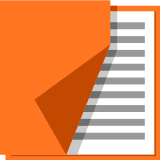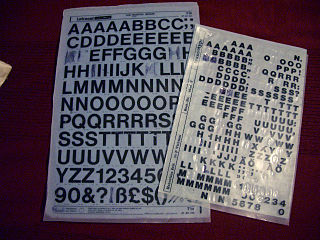Related Research Articles

PostScript (PS) is a page description language in the electronic publishing and desktop publishing realm. It is a dynamically typed, concatenative programming language. It was created at Adobe Systems by John Warnock, Charles Geschke, Doug Brotz, Ed Taft and Bill Paxton from 1982 to 1984.

The LaserWriter is a laser printer with built-in PostScript interpreter sold by Apple, Inc. from 1985 to 1988. It was one of the first laser printers available to the mass market. In combination with WYSIWYG publishing software like PageMaker, that operated on top of the graphical user interface of Macintosh computers, the LaserWriter was a key component at the beginning of the desktop publishing revolution.
Desktop publishing (DTP) is the creation of documents using page layout software on a personal ("desktop") computer. It was first used almost exclusively for print publications, but now it also assists in the creation of various forms of online content. Desktop publishing software can generate layouts and produce typographic-quality text and images comparable to traditional typography and printing. Desktop publishing is also the main reference for digital typography. This technology allows individuals, businesses, and other organizations to self-publish a wide variety of content, from menus to magazines to books, without the expense of commercial printing.

PagePlus was a desktop publishing program developed by Serif for Microsoft Windows. The first version was released in 1991 as the first commercial sub-£100 DTP package for Microsoft Windows. The final release was PagePlus X9, which was released in November 2016. In June 2019 it was officially replaced by Serif with Affinity Publisher.
Adobe FrameMaker is a document processor designed for writing and editing large or complex documents, including structured documents. It was originally developed by Frame Technology Corporation, which was bought by Adobe.

Ventura Publisher was the first popular desktop publishing package for IBM PC compatible computers running the GEM extension to the DOS operating system. The software was originally developed by Ventura Software, a small software company founded by John Meyer, Don Heiskell, and Lee Jay Lorenzen, all of whom met while working at Digital Research. It ran under an included run-time copy of Digital Research's GEM.

Aldus Corporation was an American software company best known for its pioneering desktop publishing (DTP) software. PageMaker, the company's most well-known product, ushered in the modern era of desktop computers such as the Macintosh seeing widespread use in the publishing industry. Paul Brainerd, the company's co-founder, coined the term desktop publishing to describe this paradigm. The company also originated the Tag Image File Format (TIFF) file format, widely used in the digital graphics profession.

Typesetting is the composition of text by means of arranging physical type in mechanical systems or glyphs in digital systems representing characters. Stored types are retrieved and ordered according to a language's orthography for visual display. Typesetting requires one or more fonts. One significant effect of typesetting was that authorship of works could be spotted more easily, making it difficult for copiers who have not gained permission.
Adobe InDesign is a desktop publishing and page layout designing software application produced by Adobe Inc. and first released in 1999. It can be used to create works such as posters, flyers, brochures, magazines, newspapers, presentations, books and ebooks. InDesign can also publish content suitable for tablet devices in conjunction with Adobe Digital Publishing Suite. Graphic designers and production artists are the principal users, creating and laying out periodical publications, posters, and print media. It also supports export to EPUB and SWF formats to create e-books and digital publications, including digital magazines, and content suitable for consumption on tablet computers. In addition, InDesign supports XML, style sheets, and other coding markup, making it suitable for exporting tagged text content for use in other digital and online formats. The Adobe InCopy word processor uses the same formatting engine as InDesign.
Adobe PageMaker is a discontinued desktop publishing computer program introduced in 1985 by the Aldus Corporation on the Apple Macintosh. The combination of the Macintosh's graphical user interface, PageMaker publishing software, and the Apple LaserWriter laser printer marked the beginning of the desktop publishing revolution. Ported to PCs running Windows 1.0 in 1987, PageMaker helped to popularize both the Macintosh platform and the Windows environment.

Letraset was a company known mainly for manufacturing sheets of typefaces and other artwork elements using the dry transfer method. Letraset has been acquired by the Colart group and become part of its subsidiary Winsor & Newton.

Clip art is a type of graphic art. Pieces are pre-made images used to illustrate any medium. Today, clip art is used extensively and comes in many forms, both electronic and printed. However, most clip art today is created, distributed, and used in a digital form. Since its inception, clip art has evolved to include a wide variety of content, file formats, illustration styles, and licensing restrictions. It is generally composed exclusively of illustrations, and does not include stock photography.
Timeworks Publisher was a desktop publishing (DTP) program produced by GST Software in the United Kingdom.
Canvas X is a drawing, imaging, and publishing computer program from Canvas GFX for personal computers.
Silicon Beach Software was an early American developer of software products for the Macintosh personal computer. It was founded in San Diego, California in 1984 by Charlie Jackson and his wife Hallie. Jackson later co-founded FutureWave Software with Jonathan Gay. FutureWave produced the first version of what is now Adobe Flash. Although Silicon Beach Software began as a publisher of game software, it also published what was called "productivity software" at the time.

In graphic design, page layout is the arrangement of visual elements on a page. It generally involves organizational principles of composition to achieve specific communication objectives.

Ready, Set, Go! is a software package for desktop publishing. Originally developed for Apple Computer's Macintosh by Manhattan Graphics, it became one of the earliest desktop-publishing packages available for that platform. It was often compared with QuarkXPress and Aldus PageMaker in comparative magazine reviews.
References
- ↑ The Art of Desktop Publishing, by Tony Bove, Cheryl Rhodes, and Wes Thomas, Bantam, 1986, p.182
- ↑ "Software Reviews: Mac". Social Science Computer Review . 3 (3). October 1985. doi:10.1177/089443938500300322.
- ↑ Desktop Publishing, by Frederic E. Davis, John Barry, and Michael Wiesenberg, Dow Jones Irwin, 1986, p.98
- ↑ Desktop Publishing from A to Z, by Bill Grout, Irene Athanasopolous, and Rebecca Kutlin, Osborne/McGraw-Hill, 1986, p.140